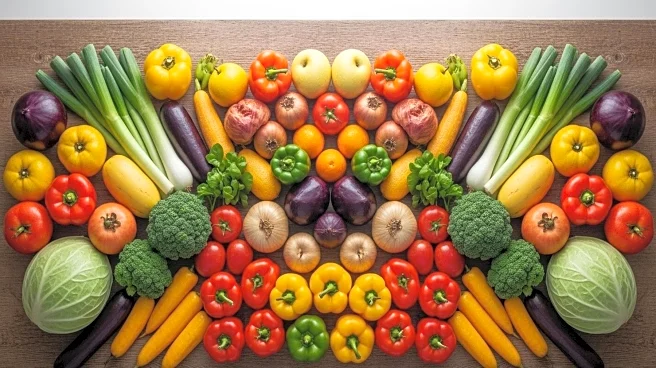What's Happening?
Fresh Del Monte produce has been subject to notable price fluctuations in recent agricultural market trends. Mangoes have emerged as a leading fruit in terms of price gains, with a remarkable 51.4% increase year-on-year and a 4.28% growth week-on-week. In contrast, pears have seen a decline of 11.2% year-on-year. These changes underscore the dynamic nature of the fresh produce sector, which has been marked by dramatic swings across various commodities. The volatility in prices reflects broader trends in the agricultural markets, where different produce categories are experiencing stark contrasts in performance.
Why It's Important?
The price volatility in Fresh Del Monte produce is significant for several reasons. It highlights the challenges faced by the agricultural sector in maintaining stable pricing amidst fluctuating market conditions. For consumers, these price changes can affect affordability and access to fresh produce, potentially impacting dietary choices and nutrition. For producers and retailers, the volatility can influence profit margins and operational strategies, necessitating adjustments in supply chain management and pricing models. The broader economic implications include potential shifts in trade dynamics and market competitiveness, as producers navigate these unpredictable trends.
What's Next?
The ongoing volatility in fresh produce prices may prompt stakeholders to seek more stable pricing mechanisms or explore alternative markets to mitigate risks. Producers might invest in technologies or practices that enhance yield predictability and reduce susceptibility to market swings. Retailers could adjust their sourcing strategies to balance cost and availability, while consumers may alter purchasing habits based on price trends. Additionally, policymakers might consider interventions to stabilize the market or support affected sectors, ensuring that the agricultural industry remains resilient in the face of such fluctuations.
Beyond the Headlines
The price volatility in the fresh produce sector could have deeper implications for sustainability and environmental practices. As producers strive to manage costs and maintain profitability, there may be increased pressure to adopt practices that maximize yield and efficiency, potentially impacting environmental stewardship. Furthermore, the fluctuations could influence global trade patterns, as countries adjust their import and export strategies in response to changing market conditions. These shifts may also affect food security, as access to affordable and nutritious produce becomes a concern for vulnerable populations.











